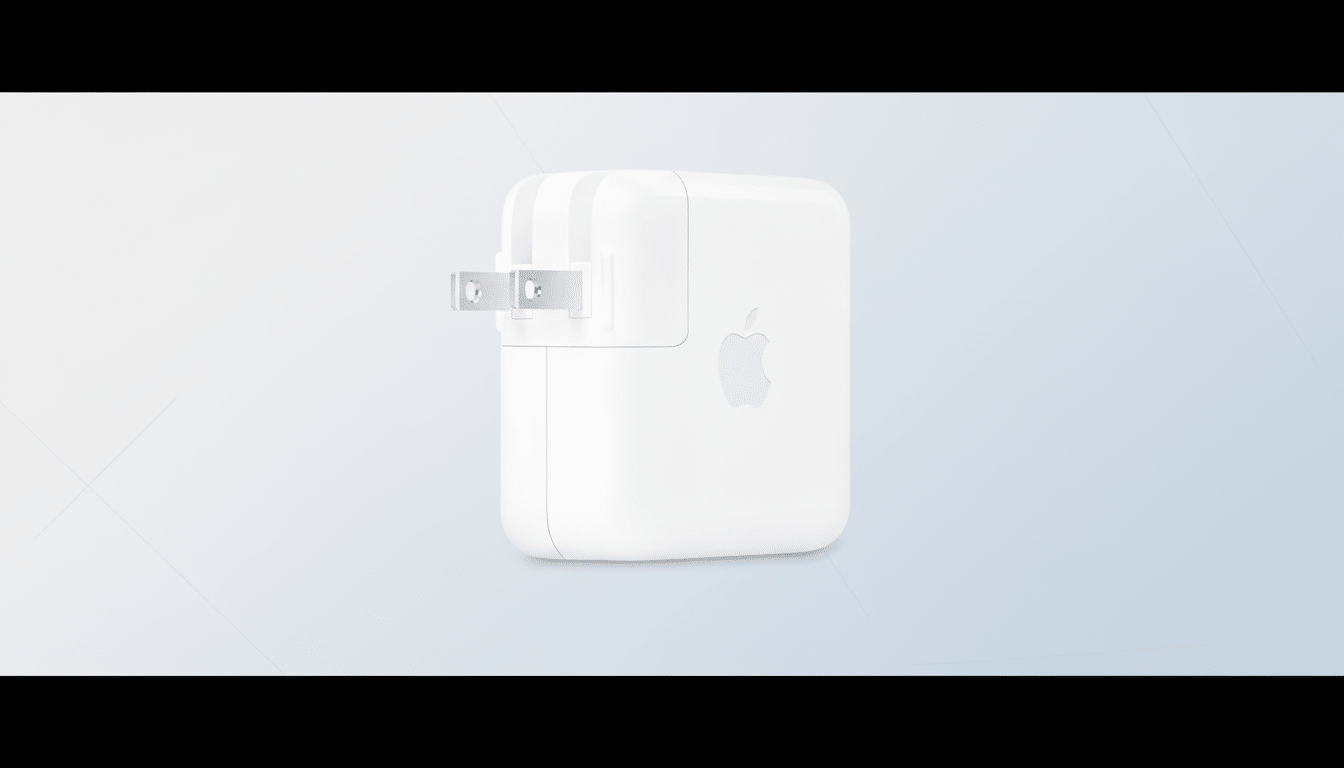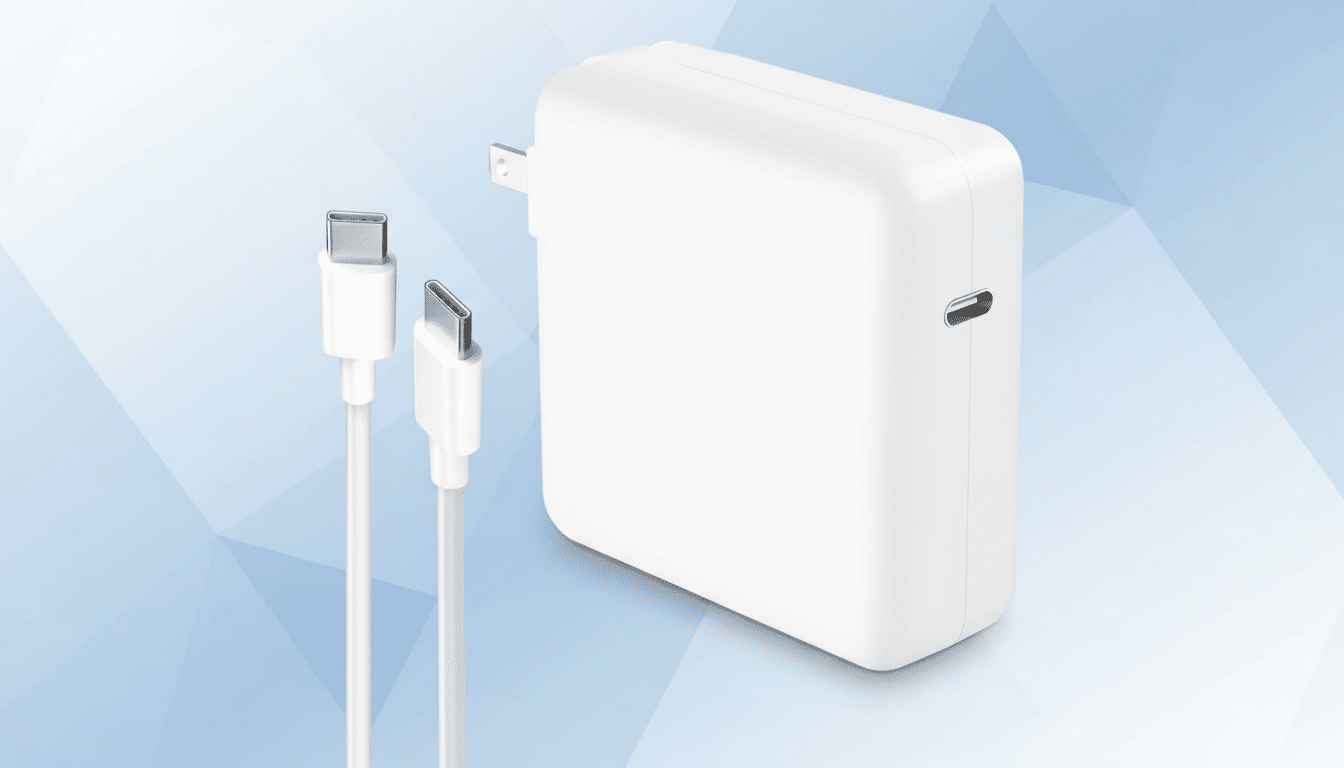Apple’s new MacBook Pros sold in Europe do not come with a USB‑C power adapter included in the box, as it becomes regional practice to require users to buy their own or use an old one they already have. The change can be seen on Apple’s website. To put this into perspective, when Apple announced new iPhones last year, they didn’t come with any charger at all. The move is in contrast to other markets where the laptop still comes with a power brick, and underscores how Europe is serving as a testing ground for accessory “unbundling.”
What’s Included in the Box for European Buyers
European customers will receive the laptop and a color‑matched USB‑C to MagSafe 3 cable, but not a USB‑C power adapter. For a lot of phone owners, reusing a charger is nothing new; for pro laptops with more demanding power needs, not so much. Now, in Europe at least (this may not be the case elsewhere), Apple’s own 70W USB‑C Power Adapter — which has previously been included with specific 14‑inch configurations — is an add‑on.
- What’s Included in the Box for European Buyers
- Pricing and Regional Differences for Power Adapters
- Why Europe Is Moving First on Charger Unbundling Now
- Compatibility and Power Needs for MacBook Pro Models
- What the Change Means for First‑Time MacBook Buyers
- The Bigger Picture on E‑Waste and Accessory Unbundling

Pricing and Regional Differences for Power Adapters
Consumers who don’t already have an appropriate spare will need to budget for one. In the UK, Apple’s 70W USB‑C Power Adapter is priced at £59, and in Germany it costs €65. Higher‑wattage bricks, like the 96W and 140W models used by more demanding configurations, are more expensive. In the US and certain other markets (basically everywhere except Europe), the accessory is still included with the new MacBook Pro, MacRumors independently reports.
Why Europe Is Moving First on Charger Unbundling Now
The move follows policy developments in the European Union that are designed to cut down on e‑waste and encourage charger reuse. The E.U.’s common charger directive would require USB‑C on many devices, and set a timeline of 2026 for laptops. Though it doesn’t outright ban bundled chargers, encouraging “decoupling” of accessories is the approach from the European Commission to reduce waste and costs for consumers. The Commission calculated that by harmonizing chargers and encouraging people to buy only the devices they need, consumers could spend hundreds of millions less, while thousands of tonnes of e‑waste would be taken off the market every year.
Apple, for its part, has made the case in environmental reports that by ditching in‑box power bricks it’s able to reduce packaging size (meaning more units per shipment) and material usage. The company started taking chargers out of iPhone boxes in 2020, and has since extended the practice to more product lines in certain markets.
Compatibility and Power Needs for MacBook Pro Models
Not all USB‑C chargers are created equal. MacBook Pro uses the USB‑C PD (Power Delivery) standard. Typical use consumes 67W–70W on a 14‑inch model, with higher‑end 14‑ and 16‑inch models offering speedier charging (96W or more) and sustained heavy workloads (140W). Under‑powering isn’t dangerous, but it may result in slow charging or even a net battery drain when under load.

For the 16‑inch MacBook Pro, fast charging requires a 140W power adapter that can deliver using the latest USB‑C PD 3.1 Extended Power Range (EPR) profile over the MagSafe 3 cable included with your MacBook Pro. Many third‑party chargers and USB‑C monitors peak at 65W or 100W; they’ll charge the laptop but not as quickly. Buyers should look at adapter labels for wattage and check PD 3.0/3.1 support; they also need to use a certified cable for higher power needs.
What the Change Means for First‑Time MacBook Buyers
The change may be a cinch for people who already own a modern USB‑C PD charger or are docked at work. For students, makers, and mobile professionals buying their first MacBook Pro, the total cost comes in a little higher than it used to: The base price of the laptop is about the same, but you’ll need an adapter that works for it as an up‑front accessory. You can imagine retailers covering their own and corporate procurement teams deploying mixed fleets, standardising on multi‑port USB‑C PD 3.1 chargers in response to this.
The Bigger Picture on E‑Waste and Accessory Unbundling
Europe produces the most e‑waste per capita in the world, according to the Global E‑waste Monitor published by the United Nations University and the International Telecommunication Union. The 2024 version cited a global e‑waste total of 62 million metric tons in 2022, and the increase outpaced recycling efforts. Accessory unbundling — when combined with clear labeling and true compatibility — can help by decreasing the number of duplicate chargers that have gone unused, or worse, into a landfill.
It is the regional divide, with Europe adopting charger‑free and other markets not, that shows how regulatory signals drive product strategy. How effectively Apple does it might depend on how USB‑C PD 3.1 connectors are accepted by accessory makers and consumers, as well as how successfully the environmental pitch outweighs the inconvenience and cost for first‑time buyers — but we’ll see both what customers say when they get their hands on this year’s models, and whether Apple eventually promotes it worldwide in the future.
Bottom line: The new MacBook Pro’s box is lighter, but the homework moves to the buyer. (Verify your existing USB‑C charger’s wattage and PD standard before you unbox — or factor it into the cost of this dock.)

